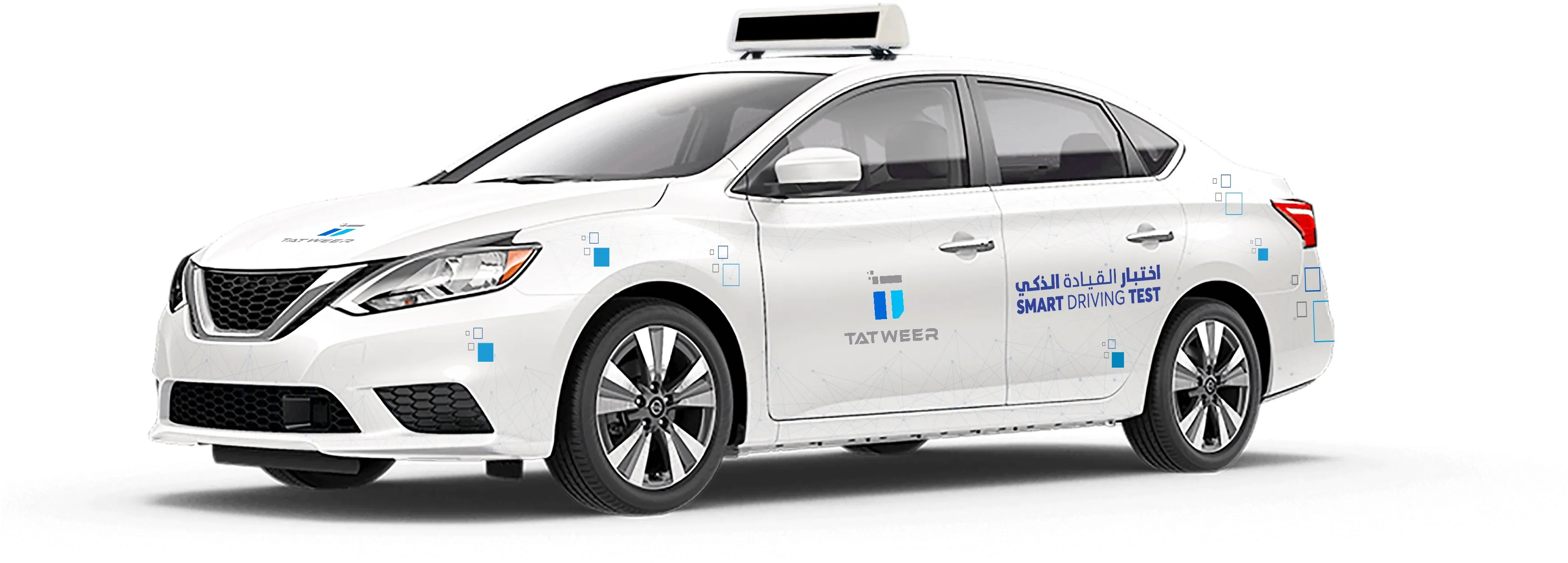
Technology is under constant development, and rapidly growing technology introduces many advances in life. The Smart Driving Test System (SDTS) was conceived and initiated by Tatweer to minimise human errors while evaluating applicants, and to assure superior transparency in results while providing a high level of monitoring and surveillance over the driving test process.
Aimed at driving schools, roads and transport authorities, police enforcement and traffic departments, the SDTS captures every action a driver would take during a test trip, starting from parking, reverse and road test including seat/mirror adjustment, to speeding, lane changing, leaving safe distances, steadiness within roundabouts, all in compliance with traffic signals/signs, and much more.
 It automates the process to ensure a hassle-free experience for both applicants and licensing authorities.
It automates the process to ensure a hassle-free experience for both applicants and licensing authorities.
The SDTS utilises the latest technologies in sensors coupled with artificial intelligence and advanced driver-assistance systems (ADAS) and is based on theoretical traffic engineering foundations enabling test assessment under real life road and traffic conditions rather than a simpler yard test. This ensures accurate assessment of drivers’ driving skills and improves the effectiveness and consistency of the overall driving test process through elimination of human errors and subjective judgment in driver evaluation.
The STDS is an innovative achievement in converting the manual evaluation process for a driving license applicant to a smart systemised process that uses best practices in technology and artificial intelligence. The SDTS offers an accurate assessment of the applicants’ driving behaviour against a set of pre-defined testing criteria and standards in compliance with the applicable traffic laws.
Automation and process standardisation ensure accuracy, efficiency, evidence, and timely monitoring capabilities. A human examiner is only involved for security and supervision purposes, or to comply with local government regulations for inexperienced drivers.
How does the STDS work?
The customised test vehicle is fully equipped with sensors and cameras to capture driving behavior with evidence. An interactive dashboard shows both real-time and historical data and KPIs, indicating the number of tests, results, applicants’ characteristics, common mistakes, geographical distribution, test duration and so on. Applicants can see a screen which displays important navigation information with voice instructions in whatever language is selected. The system integrates with the latest GIS technologies to be able to report and monitor the applicant’s exact location in real-time - and supervisors can monitor the tests via multiple cameras in the vehicle itself, switching between different viewing angles.
 ADAS use image processing algorithms for recognition of road features to accurately assess the applicant’s reactions and decisions. Tatweer’s Applicant Vision Monitoring System (AVMS) uses advanced AI algorithms to check applicant response. Tatweer’s proprietary hardware is carefully designed to enable interconnected system components talking to each other via a custom communication protocol and exchange telematic data in real time.
ADAS use image processing algorithms for recognition of road features to accurately assess the applicant’s reactions and decisions. Tatweer’s Applicant Vision Monitoring System (AVMS) uses advanced AI algorithms to check applicant response. Tatweer’s proprietary hardware is carefully designed to enable interconnected system components talking to each other via a custom communication protocol and exchange telematic data in real time.
A centralised edge processing unit reads data inputs from all system components including devices and sensors, then processes it through machine learning algorithms to extract the applicant’s testing faults. The AI based integrated platform automates the applicant’s tests, assigns examiners and routes, and monitors live their performance with real-time data analytics, correlation, image processing and criteria evaluation.
In summary, SDTS has succeeded in vastly improving the driving test cycle from pre-processing to outcome assessment including comprehensive monitoring and evaluation through the pioneering introduction of AI based automation, and its implementation has garnered widespread praise.
Content produced in association with Tatweer










